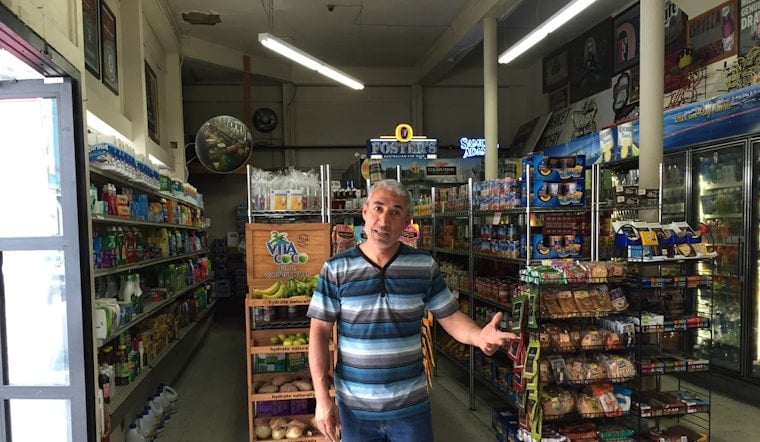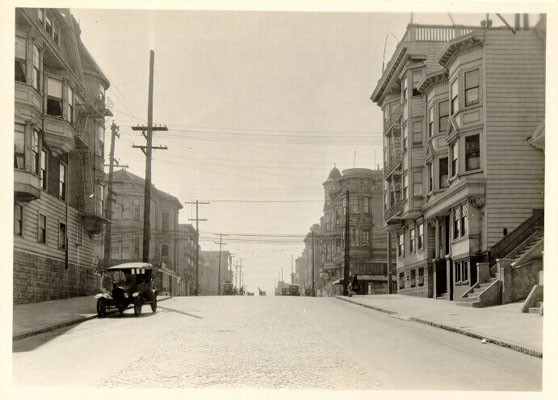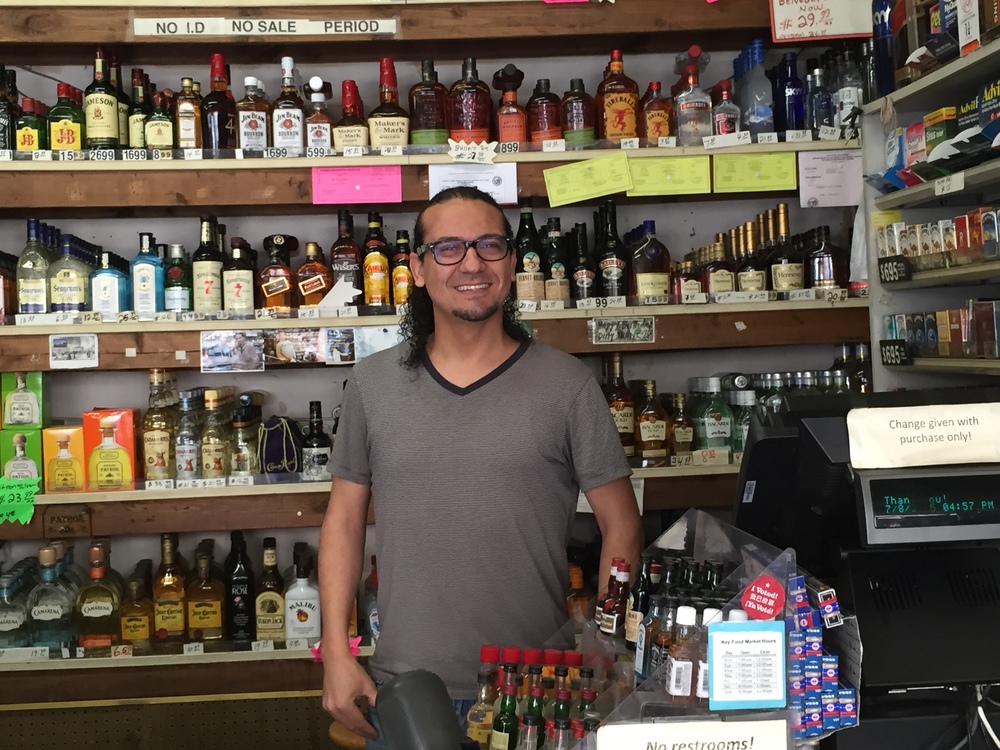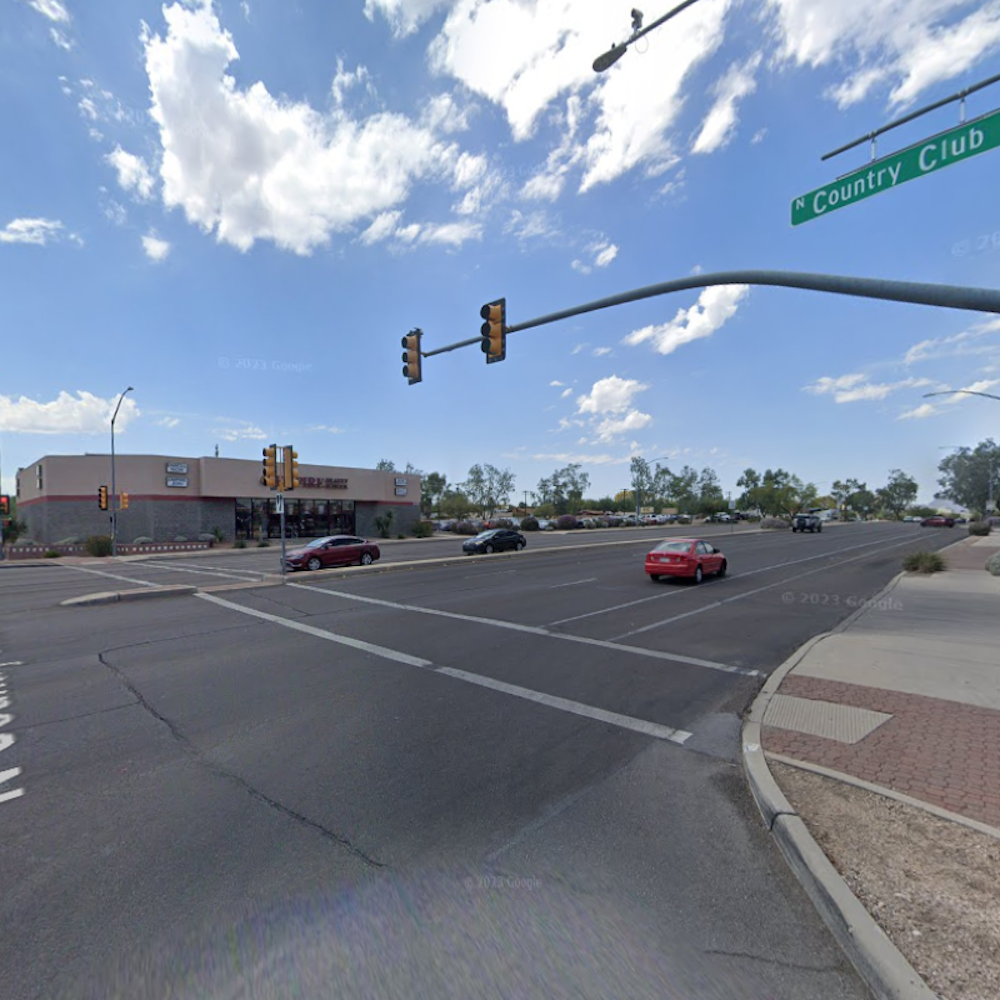
Key Food Market, located at the corner of Oak and Fillmore, has been a neighborhood market for at least 90 years.
Photos from the San Francisco Public Library's archival collection show a market on the first floor of 501 Fillmore St. back in 1928. Key Food's current owner, Imad J. Shaheen, said he has found paperwork indicating that the market was named Key Food as early as the 1940s.
 An archival photo of Oak and Fillmore from 1928. (Photo: SF Public Library, San Francisco History Center)
An archival photo of Oak and Fillmore from 1928. (Photo: SF Public Library, San Francisco History Center)
Like the proprietors featured in prior articles in this series, Imad was born in Palestine. He came to the U.S. in 1985, began working at Key Food Market in 1994, and purchased the store around 1999.
It was not always Imad’s long-term plan to run a small market. After graduating from college, he initially secured a job downtown, at Bank of America. But when he was shown the cubicle in which he would work for eight hours a day, with just a short break for lunch, Imad decided corporate America was not for him. He began working at the market with a friend, and eventually took over.
Imad originally resided in the Richmond, then moved near SF State. For the past 15 years, however, he's lived with his family in Petaluma, commuting to the market six days a week. He has two employees, and unlike the neighboring markets, none of them are family members. “Family is for home," he says. "Business is business.”

Hafedh "Omar" Mansouri, an employee of Key Food.
In the more than 20 years he's worked at Key Food Market, Imad has observed a lot of change. He describes the intersection of Oak and Fillmore as “a war zone” in the early days, with people drinking on the corner, and drug trafficking a daily occurrence.
His customer base was once 50/50 regulars and walk-ins, but these days, it's about 70 percent regulars. Imad thinks the change is due to the severe lack of parking in the area. “Today, people may occasionally pull into the bus stop to run in, but there are almost never any open parking spots near the store," he says. "People traveling on Oak or Fillmore just don’t stop and come in the store anymore."
The ethnic makeup of Key Food's customers also reflects changes in the neighborhood. “Previously, it was easily 80 percent African-American," Imad says. "Now I would say it’s about 65 percent white, 10 percent black, and a lot of Latinos.”

Imad says he doesn't think the current bubble can continue much longer. As an example, he points to San Jose, where small businesses are having trouble finding low-wage workers because they are priced out of living there.
In regards to the increased cost of living, Imad says that in general, landlords are trying not to spend money to improve buildings, while attempting to make the most money possible. He notes that the rent for one of the apartments upstairs from the store has doubled, to as much as $5,000.
Despite the changes in the neighborhood, Imad says his business has been steady throughout the years. Its flow, though, has become unpredictable. In the past, he says, it was easy to order merchandise based on the day of the week and month. But in recent years, there often are rushes or slow times that don’t seem to be based on much logic.
Still, Imad is happy to keep the Key Food name alive in the Lower Haight, where liquor stores are among the longest-running neighborhood businesses to be found.
Previously: Abe's Market, O'Looney's Market, S&W Market


-3.webp?w=1000&h=1000&fit=crop&crop:edges)






